Anne Boleyn was the first Queen Consort of England to ever be executed. There are many rumours about her: she was a witch; she had six fingers; she committed incest to have a son for Henry VIII. Some of these rumours have been debunked after her body was found during the restoration of St. Peter ad Vincula. However, there are some where the facts will never really be known. Those stories and rumours led to the downfall of Anne Boleyn in 1536.

The Downfall of Anne Boleyn: The Events that Led to Her Death
The downfall of Anne Boleyn remains a popular subject. Was she really guilty of treason and adultery? While that can never be known, here are the events that led to her death.
Anne Boleyn Gives Birth to Elizabeth I
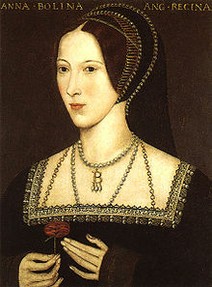 It doesn’t seem like such a big deal now but on September 7, 1533, the birth of Elizabeth I was a major disappointment. Anne Boleyn had broken her promise to the King of England to deliver him a son. Henry VIII already had one daughter—the rest of his legitimate children were stillborn or died early—he needed an heir to his throne. He needed Elizabeth to be a boy.
It doesn’t seem like such a big deal now but on September 7, 1533, the birth of Elizabeth I was a major disappointment. Anne Boleyn had broken her promise to the King of England to deliver him a son. Henry VIII already had one daughter—the rest of his legitimate children were stillborn or died early—he needed an heir to his throne. He needed Elizabeth to be a boy.
However, Anne quickly fell pregnant again. This time it had to be a son. Henry VIII believed his marriage to Anne was valid in the eyes of God and he would reward that with a healthy male heir. Unfortunately, Anne Boleyn had a miscarriage early on. Physicians indicated that the baby would have been a boy. After a second miscarriage in January 1536, Henry VIII may have started to worry that Anne could never give him the son they needed. He may have started to wonder whether their marriage was valid after all.
This wasn’t enough to bring about the downfall of Anne Boleyn and her family. By 1536, she was loved by the English people. She was kind, generous and wanted the best for them and they loved her for that. In short, she was one of the greatest queen consorts that England had ever known. Many were willing to overlook the events that led to Anne becoming Queen of England. It also helped that Catherine of Aragon had died just before Anne’s miscarriage.
Henry VIII Sets Eyes on Jane Seymour
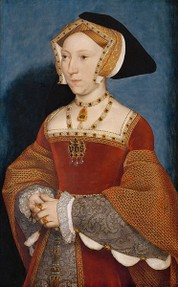 Catherine of Aragon’s death was also a great thing for Henry VIII. With her out of the way, he just had to remove Anne Boleyn. He would be free to marry and this time the marriage would definitely be valid. He had now set his eyes on one of Anne’s ladies-in-waiting: Jane Seymour. Henry VIII sent Jane gifts but she returned them. She wasn’t interested in becoming Henry’s mistress, just like Anne wasn’t all those years earlier.
Catherine of Aragon’s death was also a great thing for Henry VIII. With her out of the way, he just had to remove Anne Boleyn. He would be free to marry and this time the marriage would definitely be valid. He had now set his eyes on one of Anne’s ladies-in-waiting: Jane Seymour. Henry VIII sent Jane gifts but she returned them. She wasn’t interested in becoming Henry’s mistress, just like Anne wasn’t all those years earlier.
Thomas Cromwell used this chance to remove Anne Boleyn from power. He used it as the chance to remove the whole Boleyn faction, including Anne’s father, Sir Thomas Boleyn, and her brother, Sir George Boleyn. But why did Thomas Cromwell want rid of Anne so much? They were both religious reformers so surely they should have been on the same side.
The Downfall of Anne Boleyn
 |  |  |
| The Final Year of Anne Boleyn Only $17.32 | Great Tales from British History The ... Only $6.05 | The Fall of Anne Boleyn: A Countdown Only $5.99 |
Thomas Cromwell Wanted the Power Anne Boleyn Had
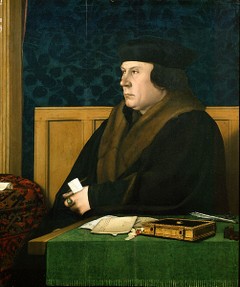 Anne was extremely stubborn and loved to debate. She would suggest things to Henry VIII and he would follow her lead. That was the power that Thomas Cromwell wanted. He was supposed to be Henry’s most trusted advisor. At first it may not have been a problem but it became a major issue when Anne started arguing with him about where the money from the monasteries would go.
Anne was extremely stubborn and loved to debate. She would suggest things to Henry VIII and he would follow her lead. That was the power that Thomas Cromwell wanted. He was supposed to be Henry’s most trusted advisor. At first it may not have been a problem but it became a major issue when Anne started arguing with him about where the money from the monasteries would go.
During 1536, the monasteries were dissolved. The money would go to the King’s coffers. In other words, it would line Thomas Cromwell’s pockets. Anne wanted the money to go to the people. She wanted to make sure they had the chance at education and wanted to get them off the streets. Cromwell didn’t believe in this but feared the King may agree with his wife. He needed way to remove Anne Boleyn’s influence and make sure he got everything he wanted.
The Warning Sign of Anne Boleyn’s Downfall
On April 23, 1536, there was the first sign that Anne Boleyn was losing her power over Henry. She had put her brother, George, forward for the Order of the Garter but Henry VIII chose Nicholas Carew. It may not have been a problem except that Carew was one of the Boleyn family’s enemies. He was the mentor of Jane Seymour, who would later become Henry VIII’s third wife.
While Henry’s illegitimate son, Henry FitzRoy, voted for George Boleyn, Henry VIII decided that it would go to Carew. It is possible that this was to settle an alliance with Francis I of France but that cannot be confirmed. For Anne, it was a public snub against her and her faction.
A few weeks later, on April 30, the first of the five men accused of adultery with Queen Anne, Mark Smeaton, was taken for questioning. He was the only man who did not have a title and, therefore, the only man who could be tortured. Whether torture really did happen though is another question. There are stories that he was tortured with a knotted rope to the eye and on the rack—as is shown in Showtime’s The Tudors—but there is no witness accounts at his execution that there was evidence.
However they managed it, Mark Smeaton confessed to having an adulterous affair with the Queen of England. This led to the next events of the downfall of Anne Boleyn.
Four Men and Anne Boleyn Arrested
The next men taken for questioning were Sir Henry Norris, Sir Francis Weston and Sir William Brereton. George and Anne Boleyn were next. They were never told of all the accusations put before them and would have found the questions thick and fast. Thomas Cromwell wanted to see them all fear for their life and waited for them to slip up.
Cromwell got a break when he questioned Lady Jane Boleyn, the wife of George. She mentioned something about a long night that George and Anne spent together. This “long night” was likely something innocent but Cromwell was able to use it for his own gain. There was only one explanation: Anne must have been having an incestuous relationship with her brother.
There was a lot of fabricated evidence used in their trials between May 12 and 15, 1536. Most of the dates put forward simply could not have happened. However, without a defence council present—those on trial for treason were not allowed a defence—and no time to plan answers, the five men and Anne Boleyn didn’t think about the dates and couldn’t give their alibis. They were found guilty by a jury of their peers and sentenced to death.
The Story of Anne Boleyn and Her Downfall
 |  |  |
| The Creation of Anne Boleyn: A New Lo... | The Fall of Anne Boleyn: A Countdown Only $8.65 | ANNE BOLEYN Only $13.64 |
The Execution of Anne Boleyn
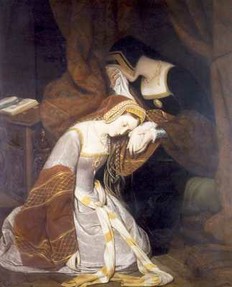 The five men were executed on May 17, 1536, by axe. Their deaths were quick and painless. Anne Boleyn had to wait two extra days for the swordsman to reach London. It was due to happen the day after but the executioner was delayed by a day. Anne Boleyn took to the scaffold on May 19, 1536, and spoke to the people. She never admitted her guilty, even during her last confession the night before. She simply asked the people to pray for her soul and for the King of England.
The five men were executed on May 17, 1536, by axe. Their deaths were quick and painless. Anne Boleyn had to wait two extra days for the swordsman to reach London. It was due to happen the day after but the executioner was delayed by a day. Anne Boleyn took to the scaffold on May 19, 1536, and spoke to the people. She never admitted her guilty, even during her last confession the night before. She simply asked the people to pray for her soul and for the King of England.
There is much controversy surrounding the downfall of Anne Boleyn. Many question whether she was guilty of adultery and incest. They question whether she was a witch—a theory put forward by Henry VIII at one point as he believed he was bewitched into falling for her. Whether she really was guilty or not is never something that can be proven but it is certain that Thomas Cromwell has a main part in the downfall of Anne Boleyn.
You might also like
England Under the Tudors: Would King Edward VI Have Been a Goo...Edward VI reigned between 1547 and 1553 when he was just a boy. It's hard to ...
Lady Jane Boleyn: Vindictive Woman or Pawn in a Plot?Jane Boleyn is known for her part in bringing down the Boleyn faction. How mu...
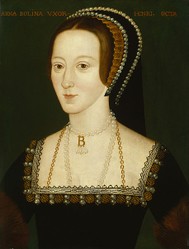


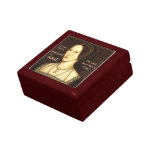

 Alternate History: What If Mary I Had a Child?on 01/26/2015
Alternate History: What If Mary I Had a Child?on 01/26/2015
 Francis II of France Dies: Mary, Queen of Scots Returns Homeon 12/05/2014
Francis II of France Dies: Mary, Queen of Scots Returns Homeon 12/05/2014
 Does Writedge Pay? Payment Proofon 12/03/2014
Does Writedge Pay? Payment Proofon 12/03/2014
 Alternate History: What If Lady Jane Grey Was Not Deposed?on 11/11/2014
Alternate History: What If Lady Jane Grey Was Not Deposed?on 11/11/2014
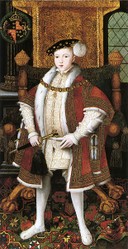

Comments